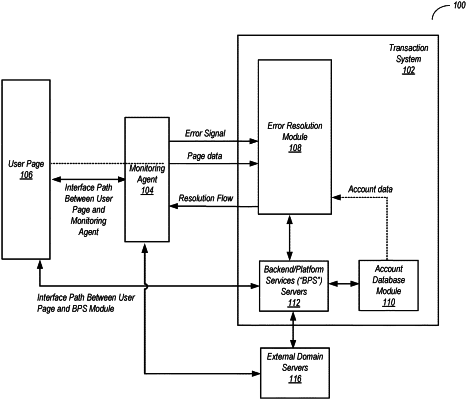| CPC G06F 11/079 (2013.01) [G06F 11/302 (2013.01); G06F 11/3438 (2013.01); G06N 20/00 (2019.01); G06Q 20/108 (2013.01)] | 20 Claims |

|
1. A method, comprising:
receiving, at a computer system, from a monitoring agent interfacing with a user page for a transaction service, an error signal indicating an occurrence of an error related to an interaction of a user with the transaction service;
wherein, in response to receiving the error signal and while maintaining engagement between the user and the user page, the computer system proceeding by:
accessing data for the user page at a time of the error;
accessing account data for at least one account of the user associated with the transaction service;
determining at least one causal factor for the error in response to receiving the error signal indicating the error and based on the user page data and the account data;
determining data needed to resolve the error based on the at least one causal factor, wherein at least some of the data needed to resolve the error includes external data accessed from at least one external domain, and wherein the data needed to resolve the error includes data to be provided by the user to resolve the error;
transmitting a request for the user provided data to the user page;
determining a resolution flow based on the at least one causal factor, wherein the resolution flow is determined by accessing, from a database of rules for errors and learned error resolution flows, at least one rule and at least one learned error resolution flow corresponding to the at least one causal factor; and
transmitting the resolution flow to the monitoring agent, wherein the resolution flow includes information usable to resolve the error based on receiving the data needed to resolve the error while maintaining engagement between the user and the user page.
|